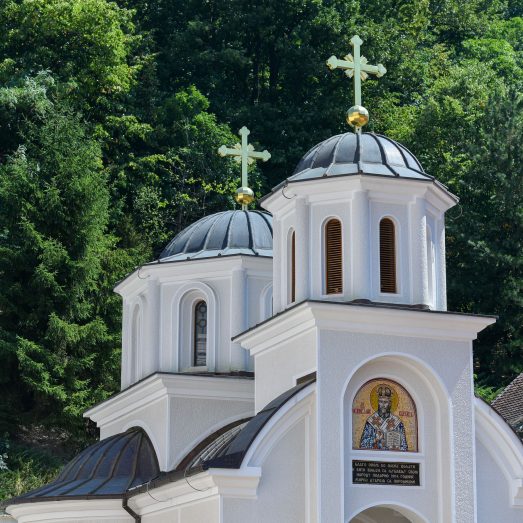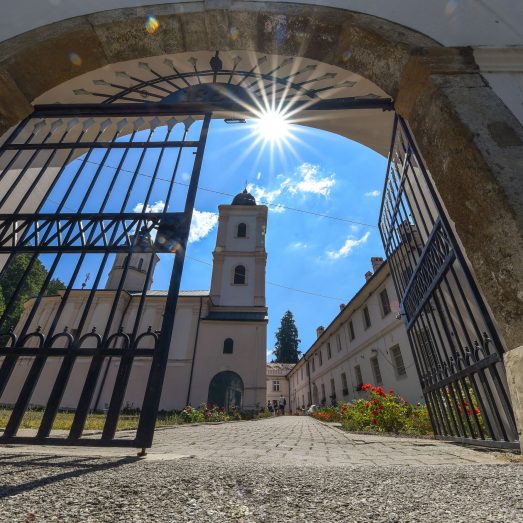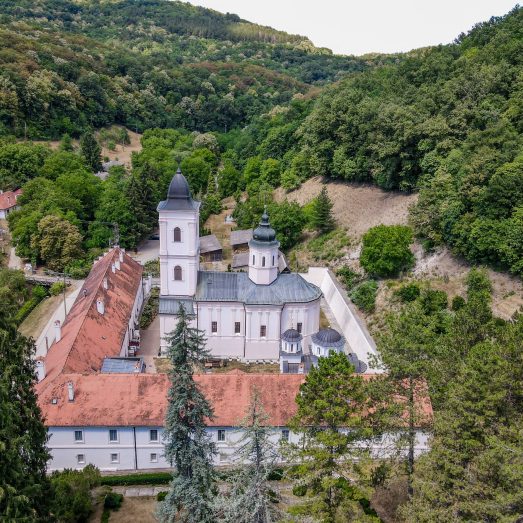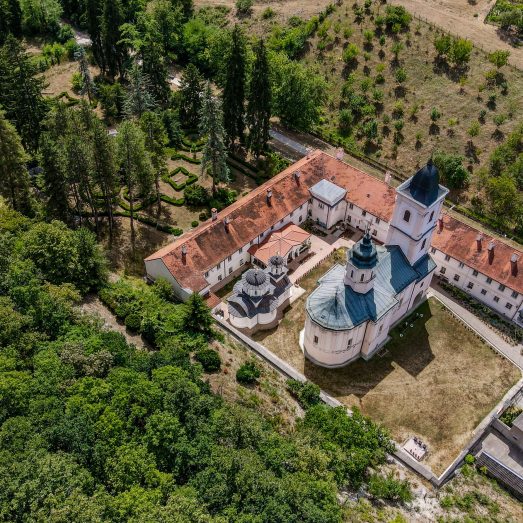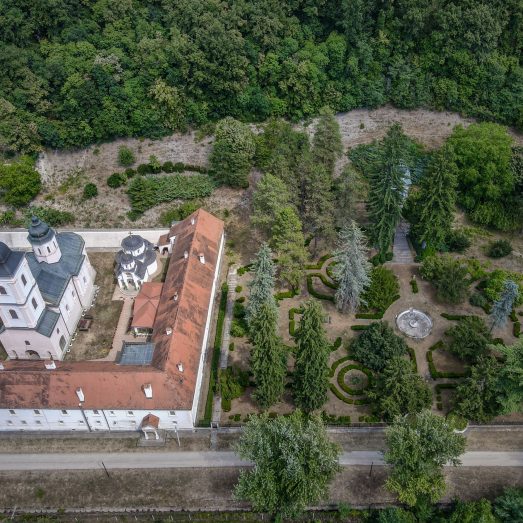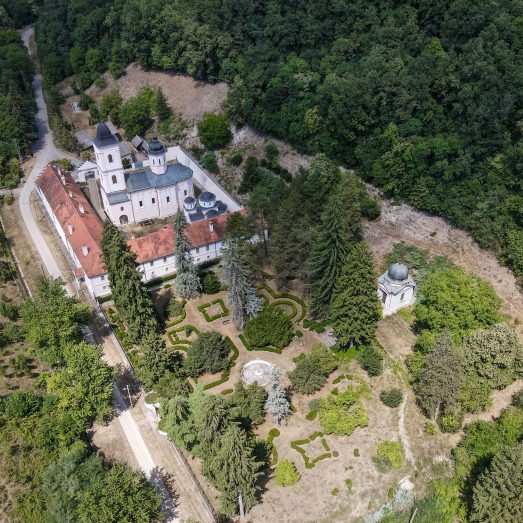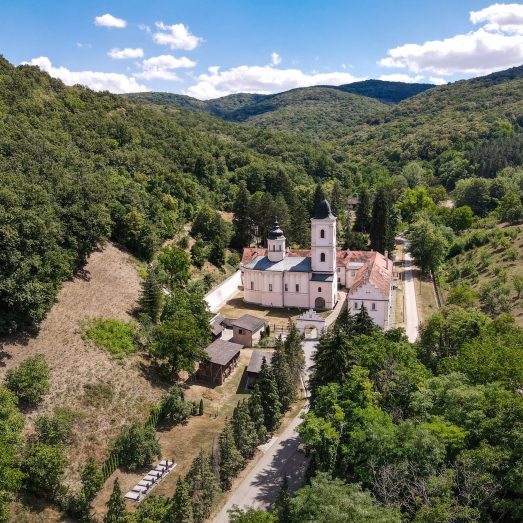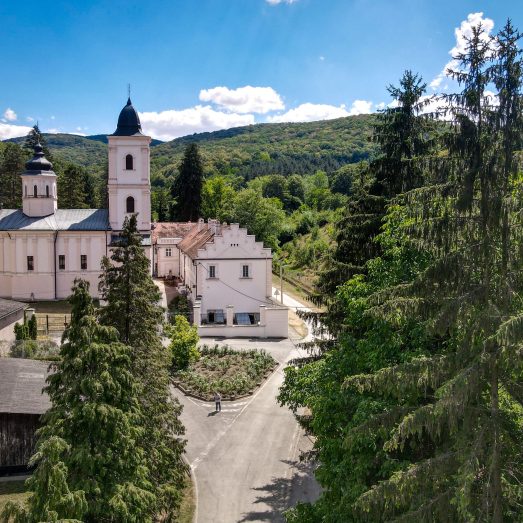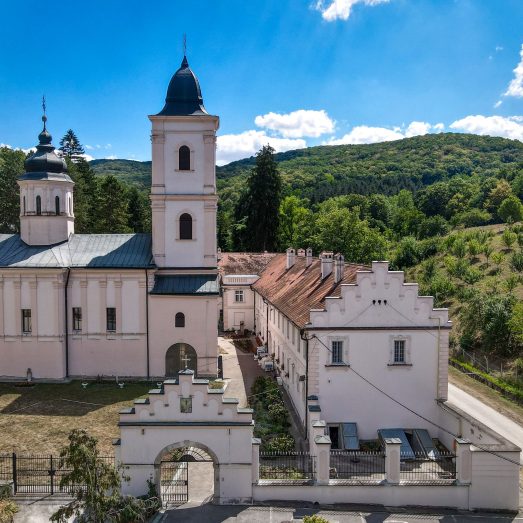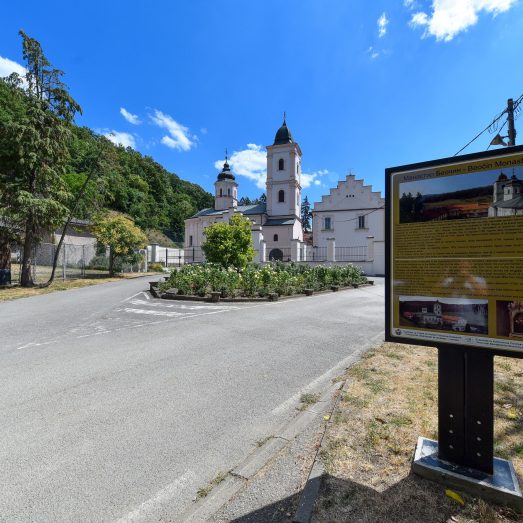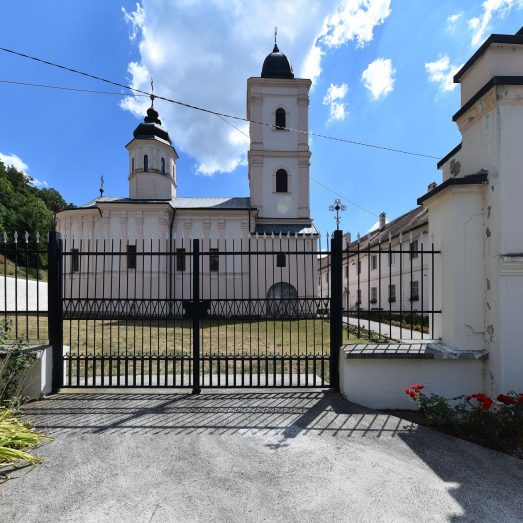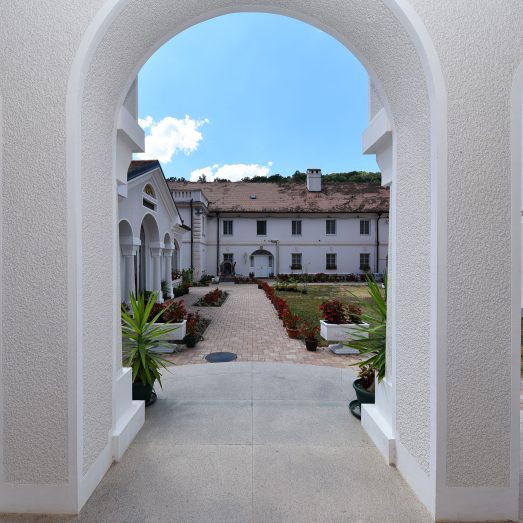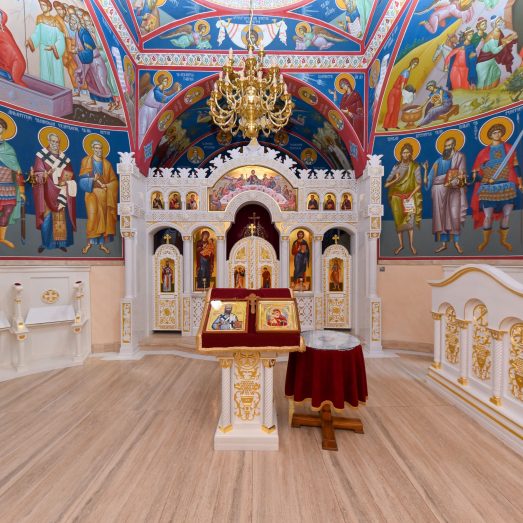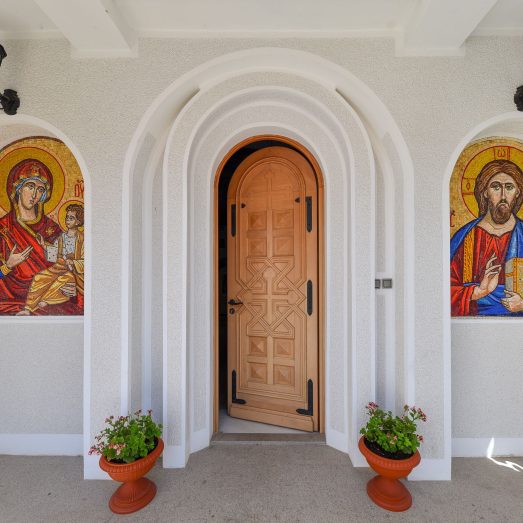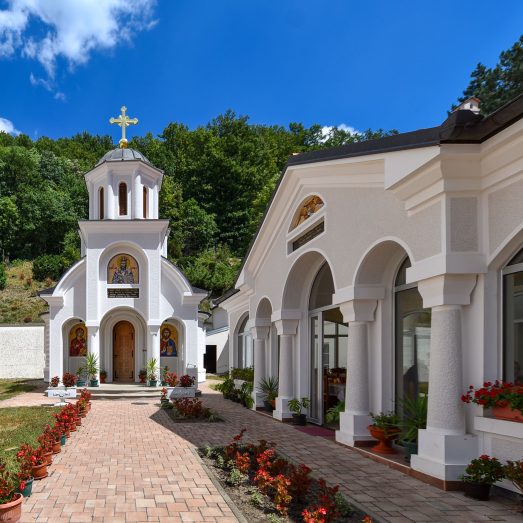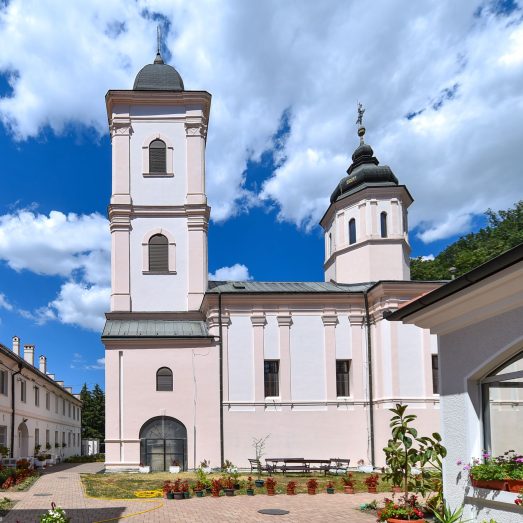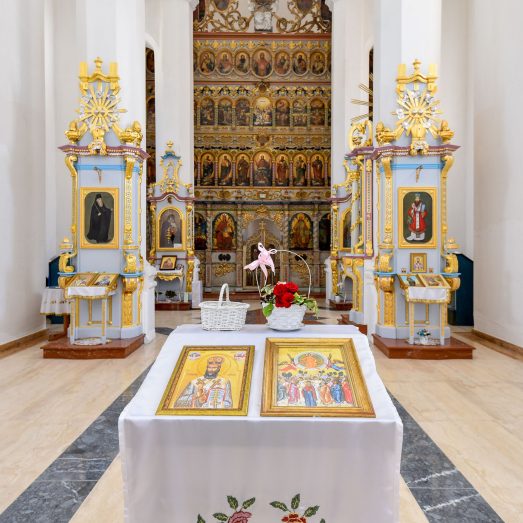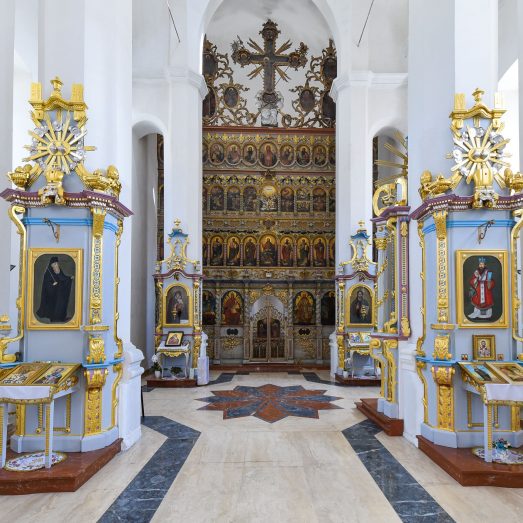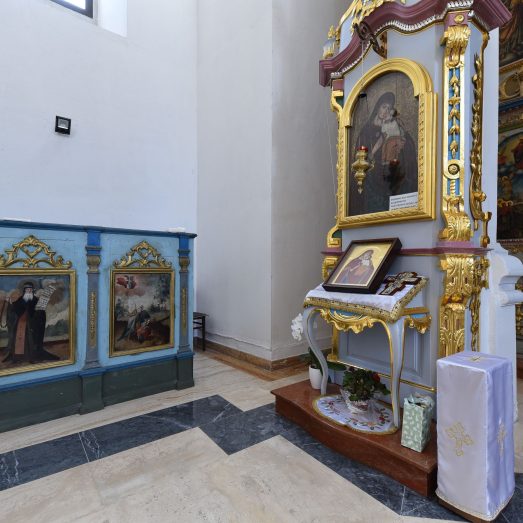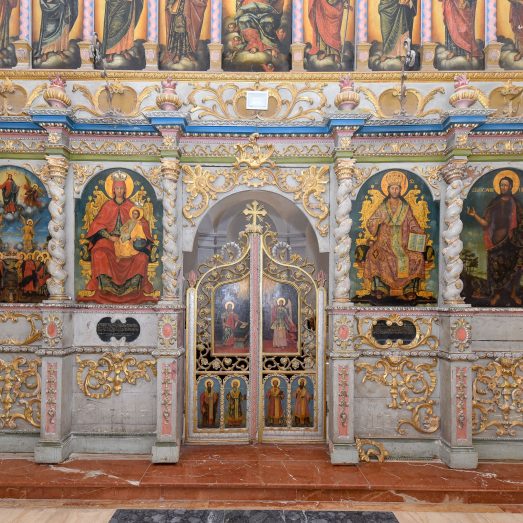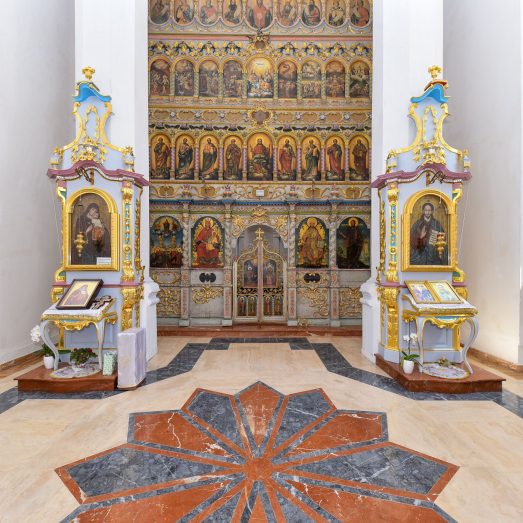The monastery church is dedicated to The Ascension of Christ (Vaznesenje Hristovo) (movable feast)
It is not known when the Beočin Monastery was founded, nor who its patron is. In historical sources, it is mentioned in a Turkish document from the middle of the 16th century. It is known that in the 17th century, during the time of Patriarch Arsenije III Čarnojević, the monks of the Rača Monastery (near Bajina Bašta) came to it, and rebuilt it.
The new church with a Baroque bell tower, which still exists in its unchanged form, was built at the end of the 18th century, and the patrons were Milivoje Milaković from Stari Futog and his son Petar from Gložan. The konaks located south and west of the church were completed in the second half of the 18th century. Until the Second World War, the monastery complex was renovated twice, at the end of the 19th and the beginning of the 20th century, and during the Second World War it was looted, but not destroyed.
In the second decade of the 21st century, the church of St. Varnava Nastić was built inside the monastery yard. Its patron is Mirko Dubroja. In the monastery park, protected by a unique model of garden architecture, there is a chapel built at the beginning of the 20th century, according to the design of Vladimir Nikolić. The Serbian poet Jovan Grčić Milenko (1846-1875) was buried in the churchyard.
The 18th-century monastery church was painted by Janko Halkozović, but unfortunately not a single fragment of this painting has been preserved. In the temple there is a magnificent Baroque iconostasis decorated with gilding painted by Janko Halkozović, Dimitrije Bačević and Teodor Dimitrijević Kračun. Throne icons are the work of Janko Halkozović. The carving work on the iconostasis was done by Johan Georg Miller, a craftsman from Novi Sad. Iconostasis in the Church of St. Varnava Nastić is the work of Petar Bilić, while wall painting is the work of Vojko Mitrić.
Back in the 19th century, the Beočin Monastery was a pilgrimage center because, at the beginning of the same century, the relics of the Serbian medieval, first crowned king among the Nemanjić family – St. Stefan the First-Crowned (Sv. Stefan Prvovenčani) (circa 1166-1227) were translated there from the Fenek Monastery. Today, his relic is located in Studenica.
Today, in the Church of the Ascension of the Lord, there is a miraculous icon of the Mother of God that attracts believers from all over the world, especially women. There is also the tomb of St. Varnava Nastić, canonized in 2005, whose day, November 12, the monastery commemorates.
Liturgy schedule: Sundays and church holidays at 9.30 a.m.
TOURIST INFORMATION: The Beočin Monastery is open for visits from 8.00 a.m. – 7.00 p.m. (during the summer) and 9.00 a.m. – 4.00 p.m. (during the winter). The appropriate way of dressing (for women covered head, long skirt, long sleeves, and for men long trousers and shirt) is implied. Advance notice is recommended for group visits.
Tel: +381 (0)21 29 70 104 (be persistent).
